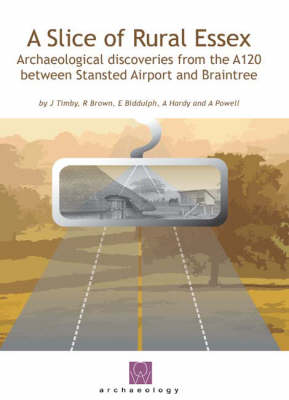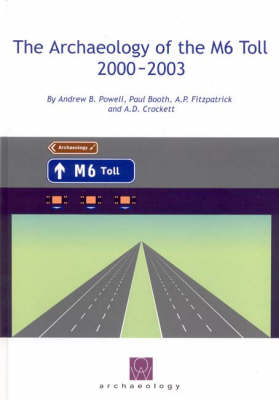Oxford Wessex Archaeology Monograph
2 primary works
Book 1
A Slice of Rural Essex
by Jane R. Timby, Richard Brown, Edward Biddulph, Andrew B. Powell, and Alan Hardy
Published 1 May 2007
The upgrading of the A120 between Stansted Airport and Braintree allowed the unique opportunity to examine a slice of landscape crossing the clay plateau of Essex; a geology which has received little attention in the past. A diverse pattern of human history was revealed including earlier prehistoric flint knapping, later prehistoric ritual activity, a Roman farmstead with accompanying cemetery, a middle Saxon hall, medieval settlement, pottery production and a windmill. This report is the product of a joint venture between Oxford Archaeology and Wessex Archaeology and has been designed to provide the reader with an accessible interpretation of the findings with supporting factual data.
Book 2
The Archaeology of the M6 Toll 2000-2003
by Andrew B. Powell, Paul Booth, A. P. Fitzpatrick, and A. D. Crockett
Published 2 April 2008
In late 2000, during one of the wettest winters on record, Oxford Wessex Archaeology were commissioned by the construction consortium CAMBBA, on behalf of Midland Expressway Limited, to carry out the archaeological works associated with the construction of the new 44km M6 Toll motorway. The main phase of work was carried out during 2001, and by 2003 all investigations were complete, revealing 41 separate sites. Remains included Mesolithic flint scatters, isolated Neolithic pits and hollows, Bronze Age burnt mounds and Iron Age settlement enclosures. The Romano-British period was dominated by settlement and burials concentrated around Wall ( Letocetum ), Ryknield Street and Watling Street, whilst the Anglo-Saxons were notable by their absence from the results. Evidence for medieval settlement and agriculture was recorded at many sites, and in particular a Knights Templar fishpond complex at Wishaw. More recent standing structures were also recorded, including the northern dam for Hatherton Reservoir, Churchbridge Railway and Accommodation bridges and sections through the Cannock Extension and Wyrley and Essington Canals, vital elements of the post-medieval industrial heritage of the region.

